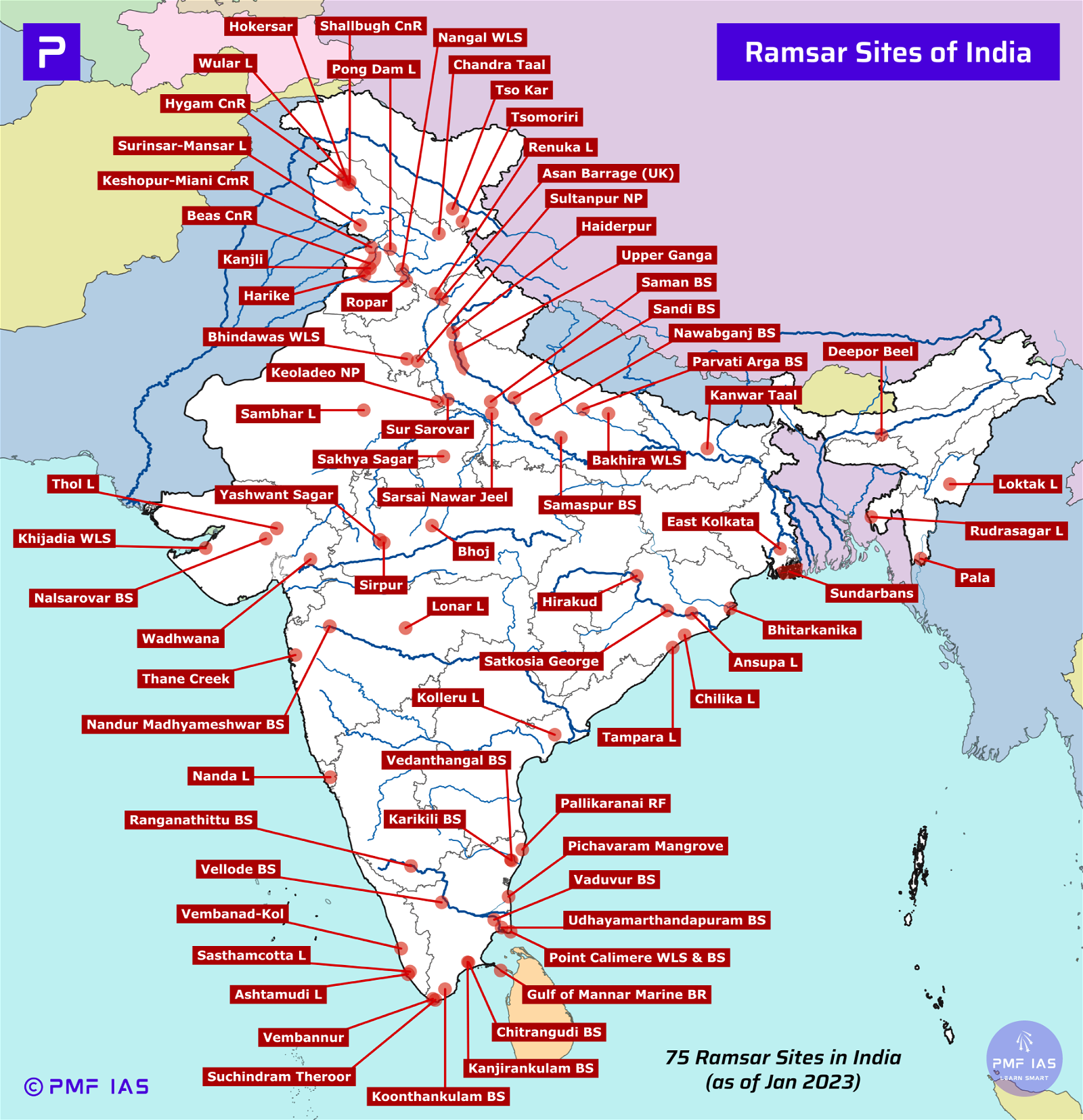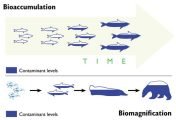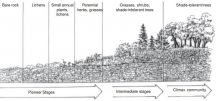
Wild Life Protection Act, Forest Conservation Act, Forest Rights Act
Subscribe to Never Miss an Important Update! Assured Discounts on New Products!
Must Join PMF IAS Telegram Channel & PMF IAS History Telegram Channel
Last updated on April 17, 2024 7:34 PM
Wild Life (Protection) Act of 1972 and Amendment, 1982
- In 1972, Parliament enacted the Wild Life Act (Protection) Act.
- The Wild Life Act provides for
- state wildlife advisory boards,
- regulations for hunting wild animals and birds,
- establishment of sanctuaries and national parks,
- regulations for trade in wild animals, animal products and trophies, and
- judicially imposed penalties for violating the Act.
- Harming endangered species listed in Schedule I of the Act is prohibited throughout India.
- Hunting species, like those requiring special protection (Schedule II), big game (Schedule III), and small game (Schedule IV), is regulated through licensing.
- A few species classified as vermin (Schedule V), may be hunted without restrictions.
- Wildlife wardens and their staff administer the act.
- An amendment to the Act in 1982, introduced a provision permitting the capture and transportation of wild animals for the scientific management of animal population.
Q. In India, if a species of tortoise is declared protected under Schedule I of the Wildlife (Protection) Act, 1972, what does it imply? (2017)
- It enjoys the same level of protection as the tiger.
- It no longer exists in the wild, a few individuals are under captive protection; and now it is impossible to prevent its extinction.
- It is endemic to a particular region of India.
- Both (b) and (c) stated above are correct in this context.
- Bengal Tiger’s IUCN status is ‘Endangered’. Gir Lions are also ‘Endangered’. Hence they fall under Schedule I of Wildlife (Protection) Act, 1972.
Answer: a) It enjoys the same level of protection as the tiger (Bengal Tiger’s IUCN status is ‘Endangered’).
Q. According to the Wildlife (Protection) Act, 1972, which of the following animals cannot be hunted by any person except under some provisions provided by law? (2017)
- Gharial
- Indian wild ass
- Wild buffalo
Select the correct answer using the code given below:
- 1 only
- 2 and 3 only
- 1 and 3 only
- 1, 2 and 3
- From the question, it is clear that the animal should falls under Schedule II or later.
- Gharial is ‘Critically Endangered’ and Water buffalo is ‘Endangered’. Hence, they fall under Schedule I. (Almost every animal listed in Chapter 6 IUCN Red List are in Schedule I).
- Indian wild ass is moved from Endangered (2015) to Near Threatened (2016). It is listed under Schedule I.
Answer: d) all
Forest (Conservation) Act of 1980
- First Forest Act was enacted in 1927.
- Alarmed at India’s rapid deforestation and resulting environmental degradation, Centre Government enacted the Forest (Conservation) Act in1980.
- It was enacted to consolidate the law related to forest, the transit of forest produces and the duty liveable on timber and other forest produce.
- Forest officers and their staff administer the Forest Act.
- Under the provisions of this Act, prior approval of the Central Government is required for diversion of forestlands for non-forest purposes.
- An Advisory Committee constituted under the Act advises the Centre on these approvals.
- The Act deals with the four categories of the forests, namely reserved forests, village forests, protected forests and private forests.
Reserved forest
- A state may declare forestlands or waste lands as reserved forest and may sell the produce from these forests.
- Any unauthorized felling of trees quarrying, grazing and hunting in reserved forests is punishable with a fine or imprisonment, or both
Village forests
- Reserved forests assigned to a village community are called village forests.
Protected forests
- The state governments are empowered to designate protected forests and may prohibit the felling of trees, quarrying and the removal of forest produce from these forests.
- The preservation of protected forests is enforced through rules, licenses and criminal prosecutions.
Biodiversity Act 2000
- India’s richness in biological resources and indigenous knowledge relating to them is well recognized.
- The legislation aims at regulating access to biological resources so as to ensure equitable sharing of benefits arising from their use.
- The Biological Diversity Bill was introduced in the Parliament in 2000 and was passed in 2002.
Salient features of the biodiversity legislation
- The main intent of this legislation is to protect India’s rich biodiversity and associated knowledge against their use by foreign individuals and organizations without sharing the benefits arising out of such use, and to check biopiracy.
- This bill seeks to check biopiracy, protect biological diversity and local growers through a three-tier structure of central and state boards and local committees.
- The Act provides for setting up of a National Biodiversity Authority (NBA), State Biodiversity Boards (SBBs) and Biodiversity Management Committees (BMCs) in local bodies.
- The NBA will enjoy the power of a civil court.
- BMCs promote conservation, sustainable use and documentation of biodiversity.
- NBA and SBB are required to consult BMCs in decisions relating to use of biological resources.
- All foreign nationals or organizations require prior approval of NBA for obtaining biological resources and associated knowledge for any use.
- Indian individuals/entities require approval of NBA for transferring results of research with respect to any biological resources to foreign nationals/organizations.
- Collaborative research projects and exchange of knowledge and resources are exempted provided they are drawn as per the policy guidelines of the Central Government.
- However, Indian citizens/entities/local people including vaids and hakims have free access to use biological resources within the country for their own use, medicinal purposes and research purposes.
- While granting approvals, NBA will impose terms and conditions to secure equitable sharing of benefits.
- Before applying for any form of IPRs (Intellectual Property Rights) in or outside India for an invention based on research on a biological resource obtained from India, prior approval of NBA will be required.
- The monetary benefits, fees, royalties as a result of approvals by NBA will be deposited in National Biodiversity Fund.
- NBF will be used for conservation and development of areas from where resource has been accessed, in consultation with the local self-government concerned.
- There is provision for notifying National Heritage Sites important from standpoint of biodiversity by State Governments in consultation with local self-government.
- There also exists provision for notifying items, and areas for exemption provided such exclusion does not violate other provisions. This is to exempt normally traded commodities so as not to adversely affect trade.
Q. How does National Biodiversity Authority (NBA) help in protecting the Indian agriculture?
- NBA checks the biopiracy and protects the indigenous and traditional genetic resources.
- NBA directly monitors and supervises the scientific research on genetic modification of crop plants.
- Application for intellectual Property Rights related to genetic / biological resources cannot be made without the approval of NBA.
Which of the statements given above is/are correct?
- 1 only
- 2 and 3 only
- 1 and 3 only
- 1, 2 and 3
- The top biotech regulator in India for Genetically Modified Organisms is Genetic Engineering Appraisal Committee (GEAC).
Answer: c) 1 and 3 only
Forest Rights Act, 2006
- The Scheduled Tribes and Other Traditional Forest Dwellers (Recognition of Forest Rights) Act, 2006.
- Forest Rights Act, 2006 provides for the restitution of deprived forest rights across India.
- The Act is providing scope of integrating conservation and livelihood rights of the people.
FRA is tool
- To empower and strengthen the local self-governance
- To address the livelihood security of the people
- To address the issues of Conservation and management of the Natural Resources and conservation governance of India.
For the first time Forest Rights Act recognizes and secures
- Community Rights in addition to their individual rights
- Right to protect, regenerate or conserve or manage any community forest resource which the communities have been traditionally protecting and conserving for sustainable use.
- Right to intellectual property and traditional knowledge related to biodiversity and cultural diversity
- Rights of displaced communities & Rights over developmental activities
Salient Features
- Nodal Agency for the implementation is Ministry of Tribal Affairs (MoTA).
- This Act is applicable for Tribal and Other Traditional Forest Dwelling Communities.
- The Act provides for recognition of forest rights of other traditional forest dwellers provided they have for at least three generations prior to 13.12.2005 primarily resided in and have depended on the forests for bonafide livelihood needs.
- The maximum limit of the recognizing rights on forest land is 4 ha.
- National Parks and Sanctuaries have been included along with Reserve Forest, Protected Forests for the recognition of Rights.
- The Act recognizes the right of ownership access to collect, use, and dispose of minor forest produce by tribals.
- Minor forest produce includes all non-timber forest produce of plant origin.
- The rights conferred under the Act shall be heritable but not alienable or transferable.
- As per the Act, the Gram Sabha has been designated as the competent authority for initiating the process of determining the nature and extent of individual or community forest rights.
Critical Wildlife Habitats (CWH)
- The Critical Wildlife Habitats (CWH) have been envisaged in Forest Rights Act, 2006.
- CWH are defined under the act as the “areas of national parks and sanctuaries where it has been specifically and clearly established, case by case, on the basis of scientific and objective criteria, that such areas are required to be kept as inviolate for the purposes of wildlife conservation”
- ‘Inviolate’ is a general term used to indicate no human settlement and usage.
- MoTA is the nodal authority for FRA.
- But the FRA identifies MoEF&CC as the agency to notify the guidelines.
2011 Guidelines by MoEF&CC
- A gram sabha’s free informed consent must be given before any relocation is carried out.
- Forest rights are settled under the FRA before a CWH can be declared in an area.
- An expert committee (members of the gram sabha, an ecologist, a tribal welfare NGO, a social scientist, Forest Department’s officers) will take the main responsibility for determining the habitats.
- In order to notify a CWH, the Act requires state governments to establish that the presence of right-holders is causing irreversible damage to wildlife and their habitats.
- After more than a decade of FRA’s existence, not a single CWH had been notified.
August 2018 Guidelines by MoEF
- In March 2017, the National Tiger Conservation Authority (NTCA) issued an order to deny forest rights in critical tiger habitats (core areas of tiger reserves) in the absence of CWH guidelines.
- MoEF&CC finally issued CWH guidelines in January 2018 and NTCA order was superseded.
- However, unlike 2011, it sent the guidelines to states ‘for action’ without soliciting public comments.
- Forest rights activists see the guidelines as a dilution of FRA.
Key features of guidelines
- The Chief Wildlife Warden of a state will notify a seven-member expert committee, chaired by a chief conservator of forest in-charge of a national park or sanctuary, for the purpose of identification of CWH in a national park or sanctuary.
- The Expert Committee will identify areas within national parks and sanctuaries, based on scientific and objective criteria relevant to the protected area.
- The Expert Committee shall issue a public notice 15 days in advance on the intention to notify CWH.
- The public notice shall include details of areas required to be kept inviolate, criteria adopted for CWH identification, implication of the notification, and options of resettlement and rehabilitation schemes.
- The Expert Committee shall carry out open consultations with all stakeholders, and the proceedings and objections will be documented appropriately.
- The committee will submit the CWH proposal to the Chief Wildlife Warden.
- The decision on the proposal will be taken by the Standing Committee of the National Board for Wildlife.
- A MoTA representative would be invited during the deliberation of the proposal by the standing committee.
- Following the committee’s recommendation, the notification of CWH will be published in the official gazette.
How do the guidelines dilute FRA?
- The guidelines have replaced prior consent of the gram sabha with a public hearing of all stakeholders
- The guidelines require the constitution of an expert committee, of which a MoTA representative would be a member, to carry out extensive and open consultation with all the stakeholders.
- There is no mechanism in the guidelines to address the objections raised during consultations.
- It is also not clear whether there would be single or multiple consultation for an entire Protected Area.
- In the existing guidelines, CWH notification does not stand any public scrutiny once ‘open consultations’ have been carried out (in contract the draft notification of every Eco-sensitive Zones (ESZ) is put up in public domain for at least 60 days before its finalisation).
- The guidelines are silent on the issue of settlement of rights before notifying CWHs.
Q. Consider the following statements: (2018)
- The definition of “Critical Wildlife Habitat” is incorporated in the Forest Rights Act, 2006.
- For the first time in India, Baigas have been given Habitat Rights.
- Union Ministry of Environment, Forest and Climate Change officially decides and declares Habitat Rights for Primitive and Vulnerable Tribal Groups in any part of India.
Which of the statements given above is/are correct?
- 1 and 2 only
- 2 and 3 only
- 3 only
- 1, 2 and 3
- 2016: Baiga tribe (living sal forests of Maikal Hills) in Madhya Pradesh is the first to get habitat rights in India.
- This is for the first time habitat rights have been given under the Forest Rights Act of 2006.
- Baiga community is one of the 75 particularly vulnerable tribal groups, or PVTGs, who are eligible to get habitat rights under FRA.
- The definition of the habitat rights was incorporated through an amendment in the FRA in 2012.
- As per the amendment, the district level committee shall ensure that all PVTGs receive habitat rights, in consultation with these groups, after filing claims before the gram sabha.
- It is MoTA that decides habitat rights.
Answer: 1 and 2 only.
National Green Tribunal Act, 2010
- Act of the Parliament of India which enables creation of NGT to handle the expeditious disposal of the cases pertaining to environmental issues.
- It was enacted under India’s constitutional provision of Article 21, which assures the citizens of India the right to a healthy environment.
- The specialized architecture of the NGT will facilitate fast track resolution of environmental cases and provide a boost to the implementation of many sustainable development measures.
- NGT is mandated to dispose the cases within six months of their respective appeals.
Origin
- During the Earth Summit 1992, India vowed the participating states to provide judicial and administrative remedies for the victims of the pollutants and other environmental damage.
Members
- The sanctioned strength of the tribunal is currently 10 expert members and 10 judicial members although the act allows for up to 20 of each.
- The Chairman of the tribunal who is the administrative head of the tribunal also serves as a judicial member.
- Every bench of tribunal must consist of at least one expert member and one judicial member.
- The Chairman of the tribunal is required to be a serving or retired Chief Justice of a High Court or a judge of the Supreme Court of India.
Jurisdiction
- The Tribunal has Original Jurisdiction on matters of “substantial question relating to environment” (i.e. a community at large is affected, damage to public health at broader level) & “damage to environment due to specific activity” (such as pollution).
- The term “substantial” is not clearly defined in the act.
Q. The National Green Tribunal Act, 2010 was enacted in consonance with which of the following provisions of the Constitution of India?
- Right to healthy environment, construed as a part of part of Right to life under Article 21.
- Provision of grants for raising the level of administration in the Scheduled Areas for the welfare of Scheduled Tribes under Article 275(1)
Which of the statements given above is/are correct?
- 1 only
- 2 only
- Both 1 and 2
- Neither 1 nor 2
Answer: a)
Q. How is the National Green Tribunal (NGT) different from the Central Pollution Control Board (CPCB) (2018)
- The NGT has been established by an Act whereas the CPCB has been created by an executive order of the Government.
- The NGT provides environmental justice and helps reduce the burden of litigation in the higher courts whereas the CPCB promotes cleanliness of streams and wells and aims to improve the quality of air in the country.
Which of the statements given above is/are correct?
- 1 only
- 2 only
- Both 1 and 2
- Neither 1 nor 2
- CPCB is a statutory organisation under the MoEFC.
- It was established under the Water (Prevention and Control of Pollution) Act, 1974.
Answer: b) 2 only
Animal Welfare Board of India
- Statutory advisory body advising the Government of India on animal welfare laws and promotes animal welfare in the country of India.
- It works to ensure that animal welfare laws in the country are followed; provides grants to Animal Welfare Organizations; and considers itself “the face of the animal welfare movement in the country.”
- It was established in 1960 under Section 4 of The Prevention of Cruelty to Animals Act, 1960.
- Well-known humanitarian Rukmini Devi Arundale was instrumental in setting up the board.
- The subject of Prevention of Cruelty to Animals is under MoEF.
Functions
- The board is highly concerned about “abuse of animals in research” and “cruelty involved when animals were used in entertainment”.
- The Board oversees Animal Welfare Organizations (AWOs) by granting recognition to them if they meet its guidelines.
- The Board provides financial assistance to recognized Animal Welfare Organizations (AWOs)
- The Board suggests changes to laws and rules about animal welfare issues.
- The Board issues publications to raise awareness of various animal welfare issues.
Q. Consider the following statements:
- Animal Welfare Board of India is established under the Environment (Protection) Act, 1986.
- National Tiger Conservation Authority is a statutory body.
- National Ganga River Basin Authority is chaired by the Prime Minister.
Which of the statements given above is/ are correct?
- 1 only
- 2 and 3 only
- 2 only
- 1, 2 and 3
- Animal Welfare Board of India is established under Prevention of Cruelty to Animals Act.
- Answer: b) 2 and 3 only
Last updated on April 17, 2024 7:34 PM

















